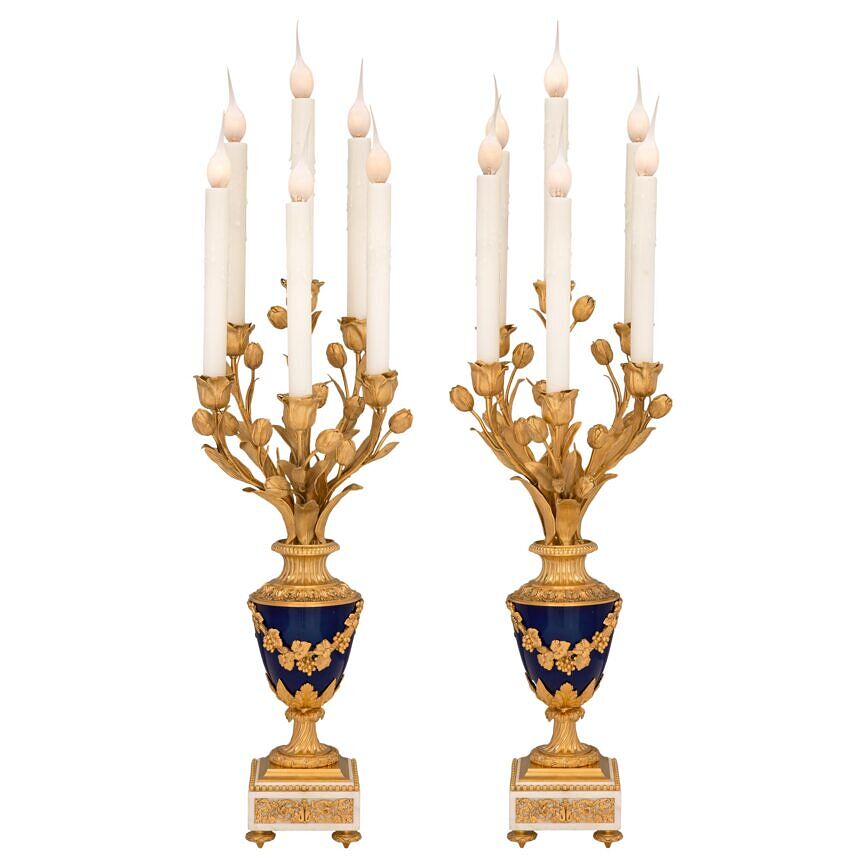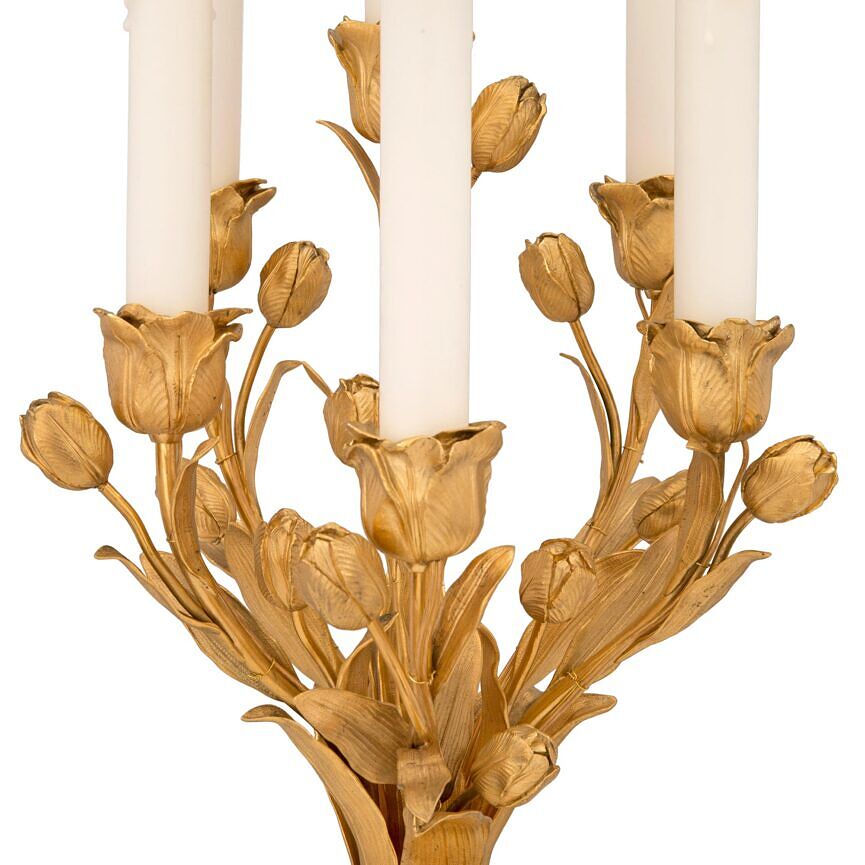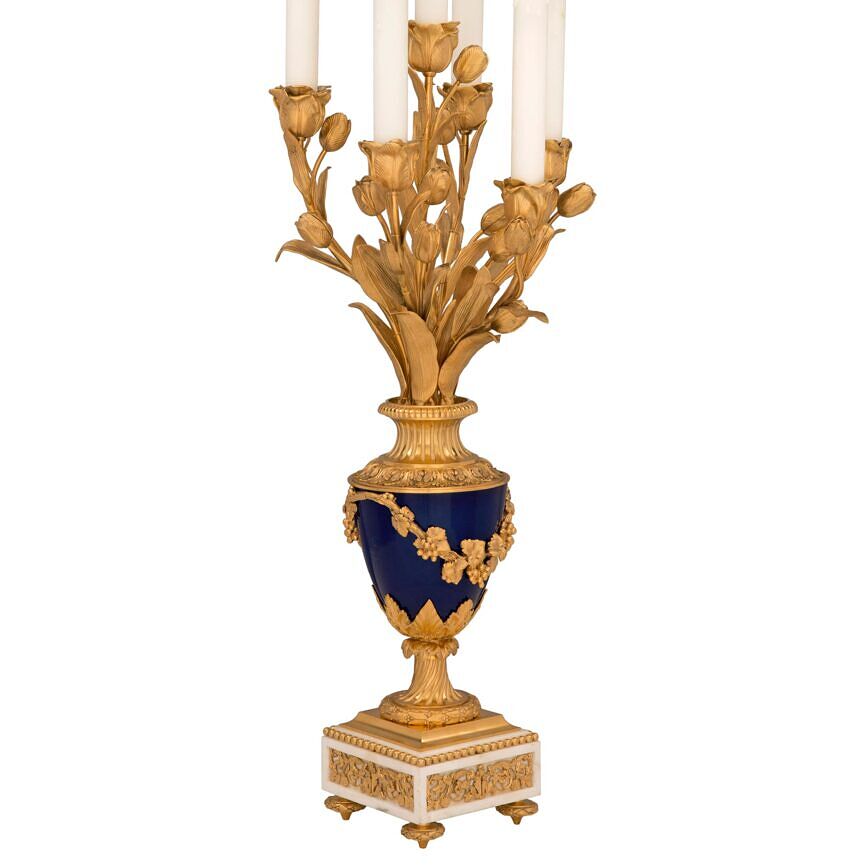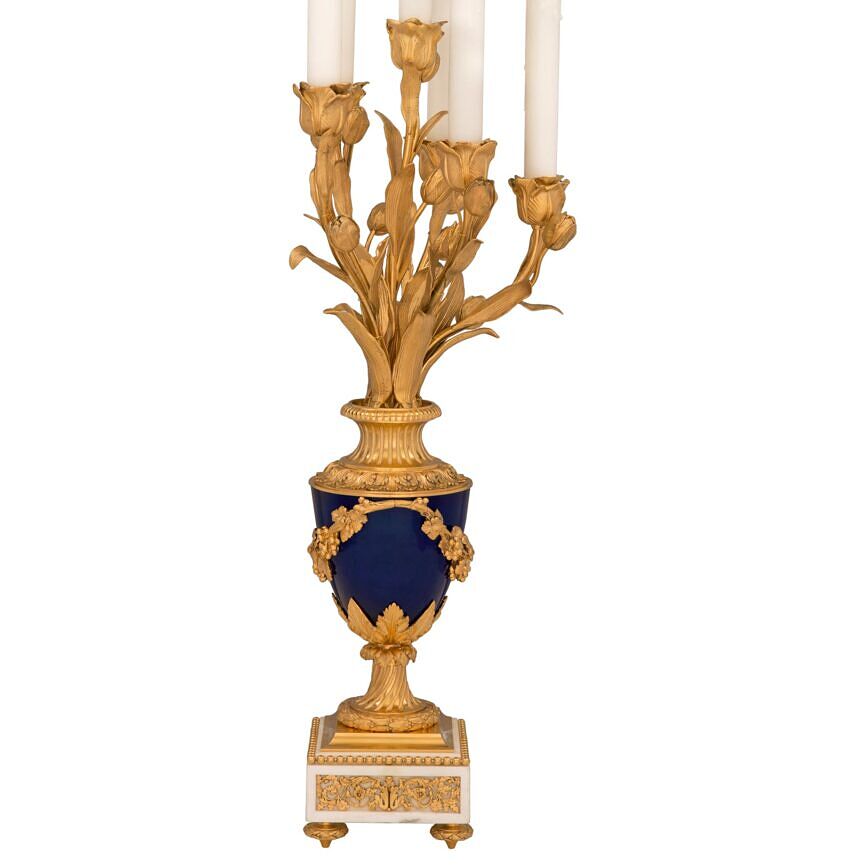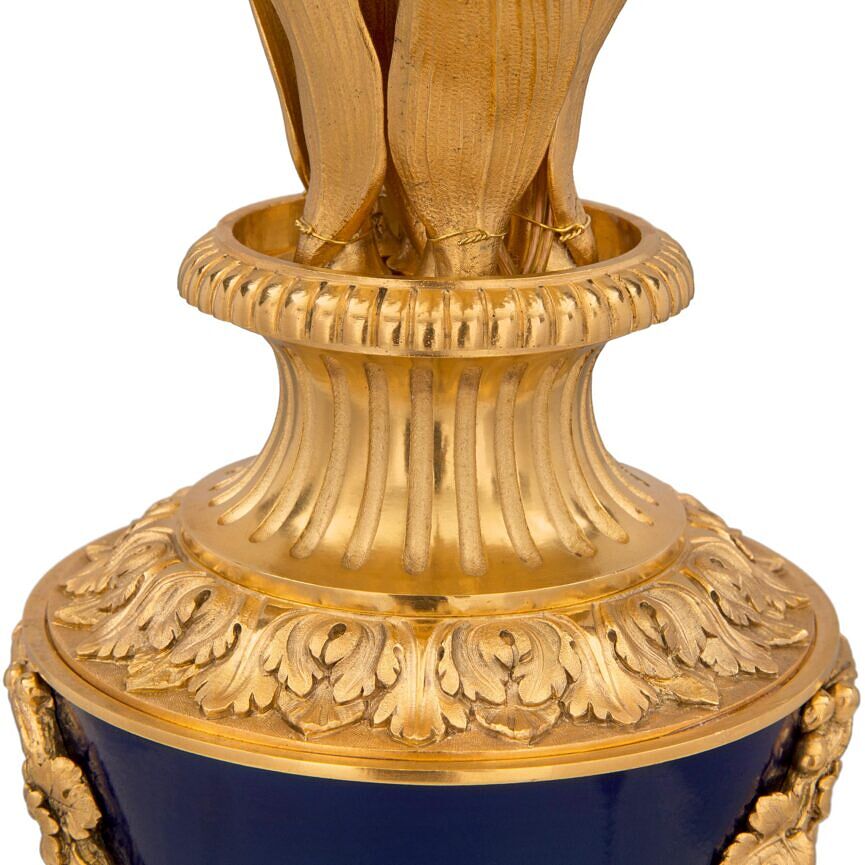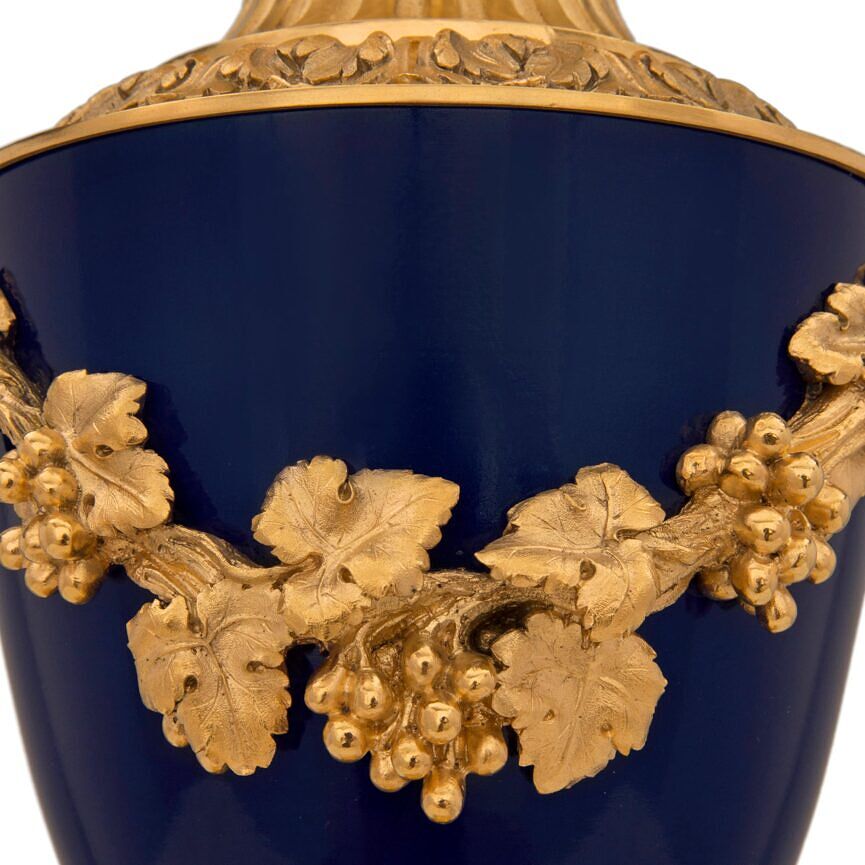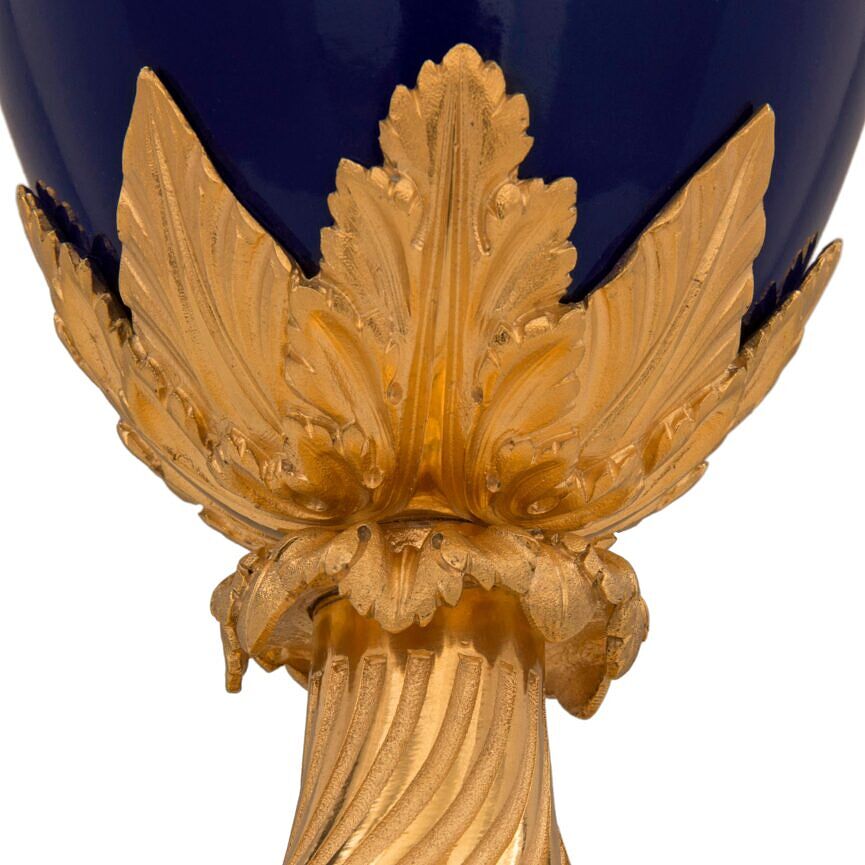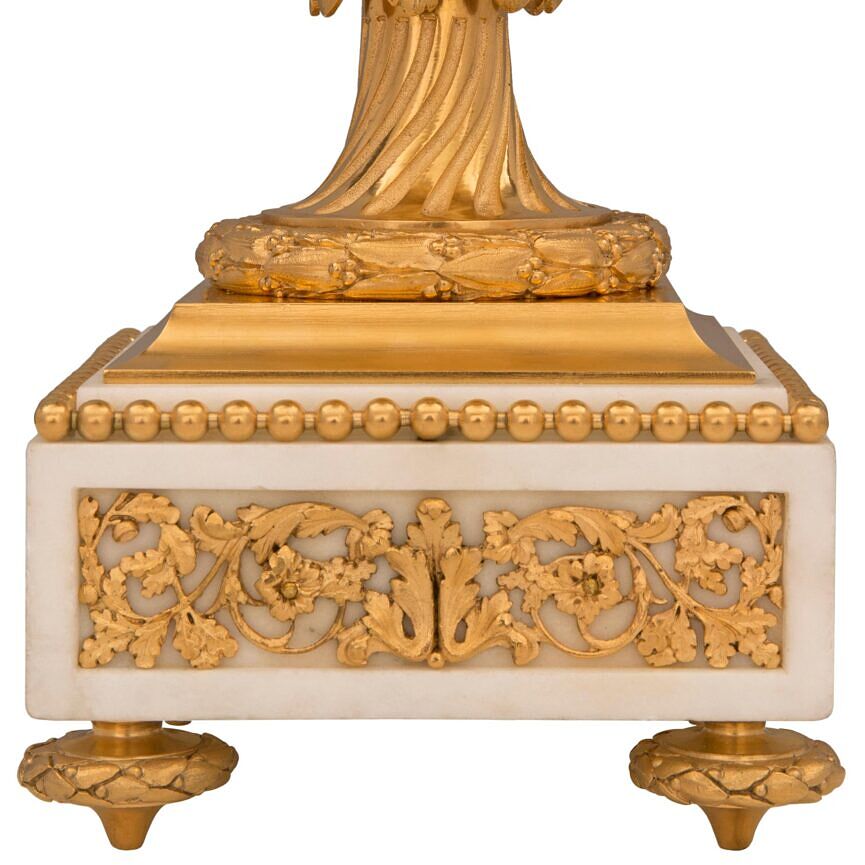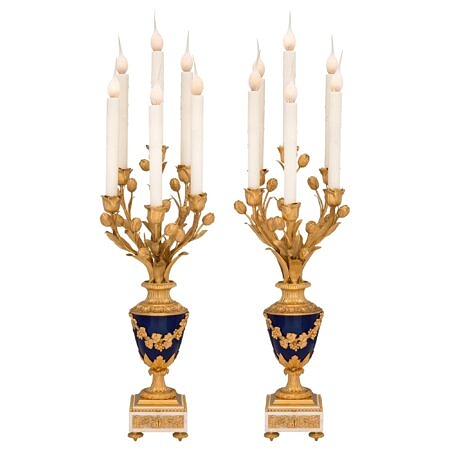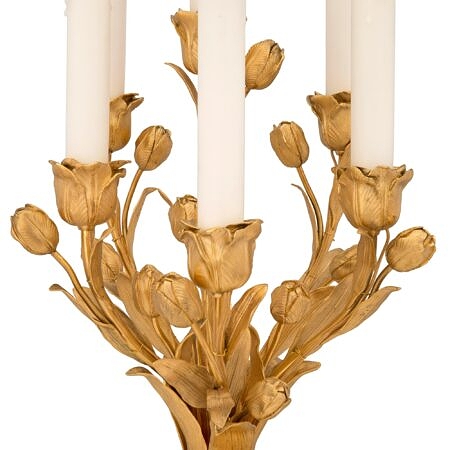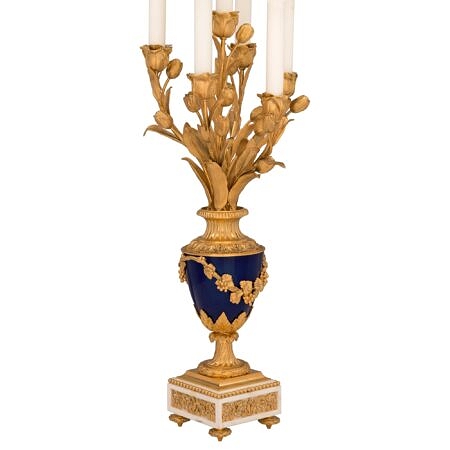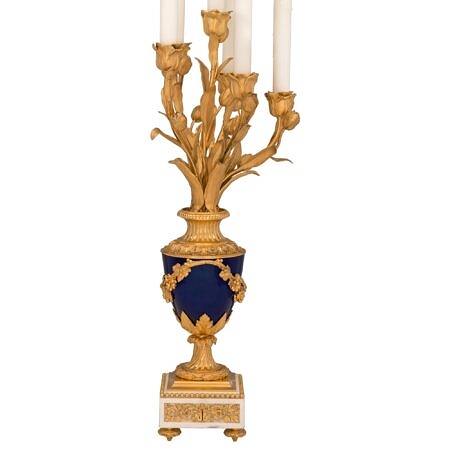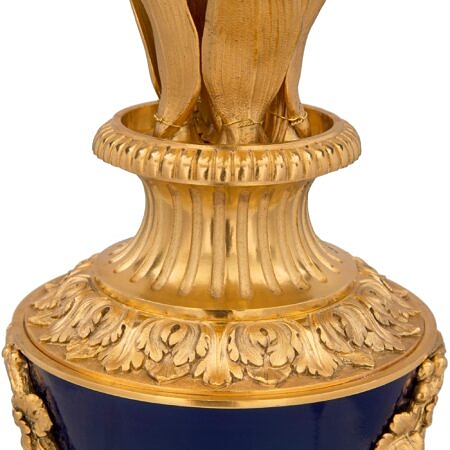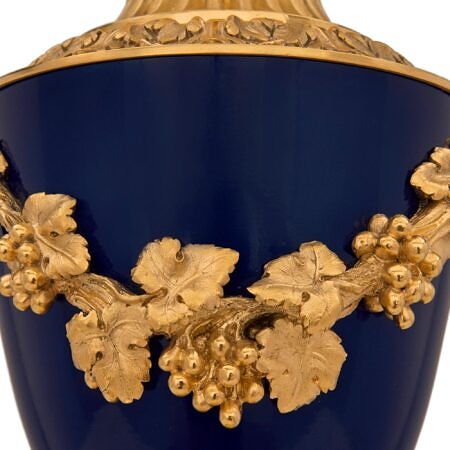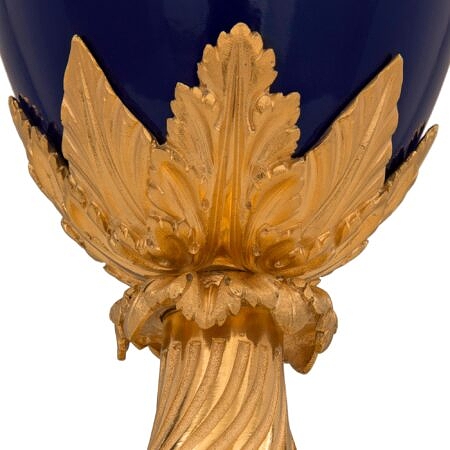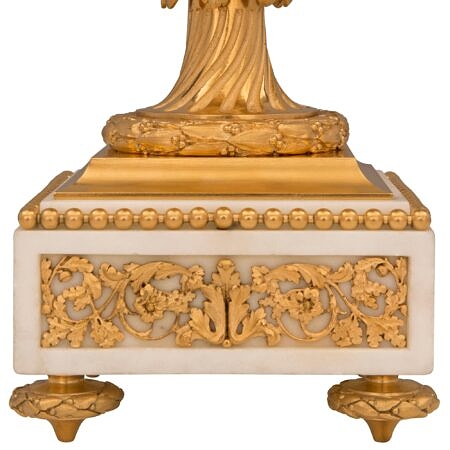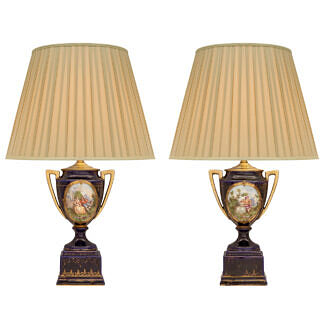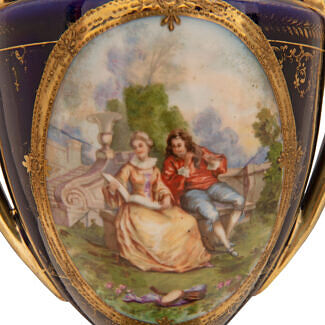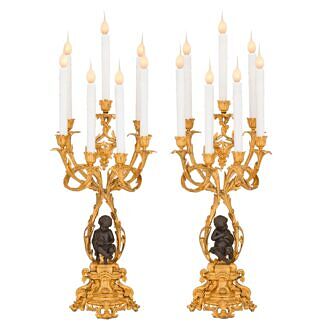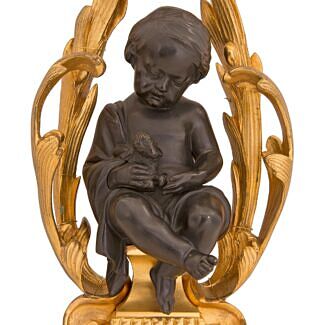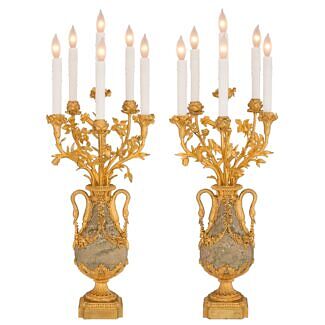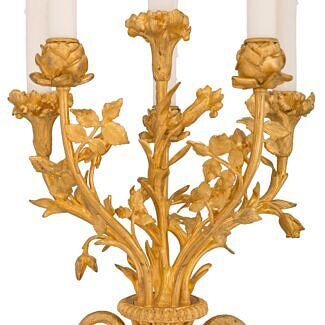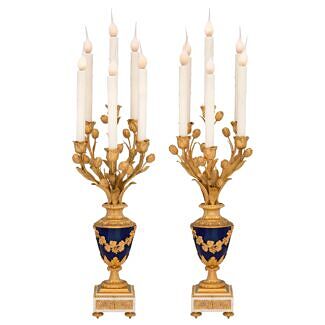A pair of French 19th century Louis XVI st. white Carrara marble, ormolu and Sèvres porcelain candelabra lamps
Sorry, This item has sold
An exquisite pair of French 19th century Louis XVI st. white Carrara marble, ormolu and Sèvres porcelain candelabra lamps. Each six arm lamp is raised by elegant topie shaped feet below a square white Carrara marble base decorated with exceptional... — Read More
An exquisite pair of French 19th century Louis XVI st. white Carrara marble, ormolu and Sèvres porcelain candelabra lamps. Each six arm lamp is raised by elegant topie shaped feet below a square white Carrara marble base decorated with exceptional finely detailed pierced fitted foliate ormolu plaques with lovely scrolled Rinceau shaped movements. Above a lovely beaded band and mottled border is the striking spiral fluted socle shaped pedestal support with a superb wrap around berried laurel band all in a superb satin and burnished finish. The beautiful cobalt blue Sèvres porcelain bodies are encased by remarkable richly chased swaging vines with intricately detailed vines leaves, grape clusters, and lovely foliate designs below the elegantly curved fluted necks from where the six arms are seemingly growing out of. Each of the branch like arms displays lovely finely detailed leaves and flower buds with stunning blooming flower candle cups. All original gilt throughout. — Read Less
- Item # 12320
-
H: 35.5 in L: 9.5 in D: 8 in
H: 90 cm L: 24 cm D: 20 cm
- France
- 19th Century
- Marble/Stone, Ormolu, Sèvres Porcelain
- Louis XVI st. Read More
- Sèvres Read More
It was founded through the support of King Louis XV of France and at the initiative of Madame Pompadour to be located near her Château.
Due to Sèvres’ reputation for excellence and prestige, it has always attracted some of the best artists throughout history; François Boucher, Albert-Ernest Carrier-Belleuse, Étienne Maurice Falconet, Alexandre Fragonard and August Rodin, just to name a few. Many of these artworks can be seen at the Louvre Museum and the Musée National de Céramique in France.
Initially, Sèvres created a soft paste porcelain know as Biscuit de Sèvres. In 1768 the Bordeaux chemist Villaris and Jean Baptiste Darnet discovered deposits of Kaolin on French soil. In 1771 the Royal Academy sent a report on the creation of hard paste porcelain at which time Sèvres began manufacturing hard paste porcelain.
Louis-Simon Boizot (1743–1809) was a French sculptor renowned for creating Biscuit de Sèvres models, and was the director at Sèvres from 1774-1800, followed by Alexandre Brogniart(1800-1847) and Henri Victor Regnault in 1854.
Related products
-
# 374 - H: 25" L: 7" D: 15"
-
# 5537 - H: 36" L: 12" D: 10"
-
# 4981 - H: 34" L: 12" D: 6"


